1788
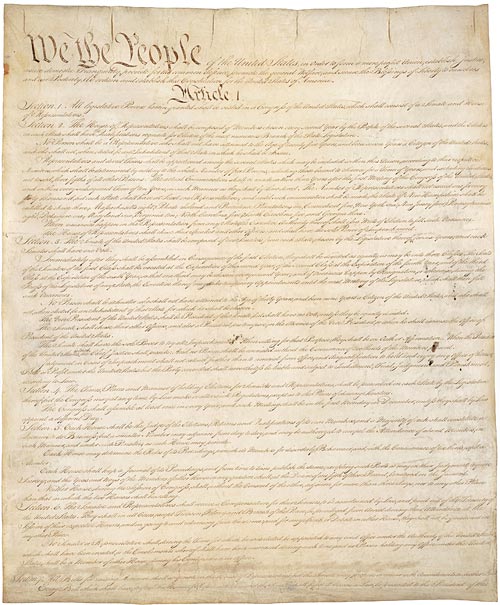
New York became the 11th state to ratify the Constitution by a margin of just three votes (30-27). New York's acceptance of the Constitution was crucial to the stability of the new nation and marked a victory for Alexander Hamilton, John Jay, and James Madison who had authored The Federalist Papers in order to convince New Yorkers of the virtues of the new Constitution.
1789
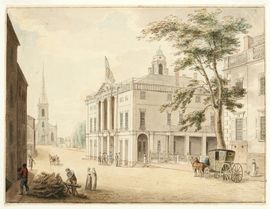
The First Congress convened at Federal Hall in New York City, although New York was not represented until July of that year, owing to a deadlocked state legislature. The Senate could not begin its business until April 6, when it achieved its first quorum.
1789

Rufus King, originally from Massachusetts but later of New York City, presented credentials and took the oath of office as New York's first senator. Two days later, Philip Schuyler of Albany took his oath. On July 28, they drew lots for class assignments. King drew Class 3, for the term to expire in 1795, and Schuyler drew Class 1, for the term to expire in 1791.
1798

Senator John Laurance of New York City became the first and, to date, only president pro tempore of the Senate from the State of New York. He held the position for three weeks, until December 27.
1801
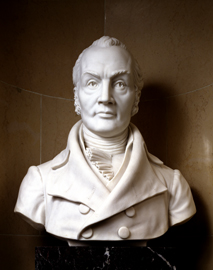
Aaron Burr presided over the Senate as the third vice president of the United States. He had previously represented New York in the Senate for one term, from 1791 to 1797.
1805

Vice President Aaron Burr delivered his farewell address to the Senate while under indictment for the murder of Alexander Hamilton in a duel on the banks of the Hudson River. Burr was acquitted of the charges but found himself on trial for treason just two years later in 1807. Though acquitted of the treason, his reputation never recovered.
1805
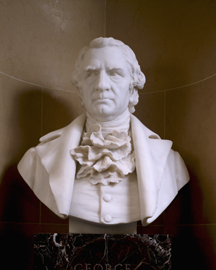
The first and longest-serving governor of New York, George Clinton of Little Britain, presided over the Senate as the fourth vice president of the United States. He served as vice president in the administrations of both Thomas Jefferson and James Madison, until his death in 1812.
1817
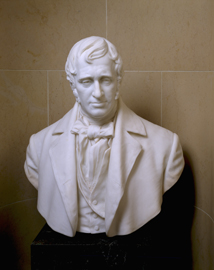
Former governor of New York Daniel D. Tompkins of Scarsdale presided over the Senate as the sixth vice president of the United States.
1817

Nathan Sanford of Long Island became chairman of the Senate Committee on Commerce and Manufactures (today's Committee on Commerce, Science, and Transportation), a position he held until May 15, 1820. On November 16, 1819, he became chairman of the Senate Committee on Finance, serving until 1821. He became chairman of the Senate Committee on Foreign Relations on March 1, 1826, serving until 1827.
1821
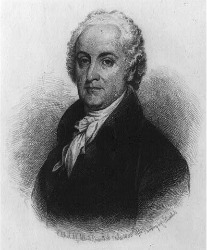
Rufus King who had returned to the Senate in 1813, became chairman of the Senate Committee on Foreign Relations, a position he held until 1822.
1823

Martin Van Buren of Kinderhook became chairman of the Senate Committee on the Judiciary, a position he held until 1828.
1828
Martin Van Buren resigned his Senate seat following his election as governor of New York. He left his post as governor one year later to serve as secretary of state under President Andrew Jackson, a position he held until 1831.
1831

William Marcy of Troy became chairman of the Senate Committee on the Judiciary, a position he held until 1832.
1833
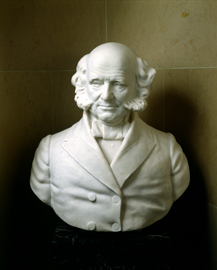
Former senator, governor of New York, and secretary of state Martin Van Buren presided over the Senate as the eighth vice president of the United States. In 1836 he became the fourth former senator to win election as president of the United States, a position he held from 1837 to 1841. He ran unsuccessfully for reelection in 1840, and again unsuccessfully in 1848.
1836

Silas Wright of Canton became chairman of the Senate Committee on Finance, a position he held until 1841.
1846

John Dix of Albany became chairman of the Senate Committee on Commerce (today's Committee on Commerce, Science, and Transportation), a position he held until 1849.
1848
At the direction of the Senate, the sergeant at arms arrested New York Herald reporter John Nugent for publishing the secret treaty that ended the Mexican-American War. Nugent was locked in a committee room during the day and spent his evenings dining and sleeping comfortably at the home of the sergeant at arms. After a few weeks of unsuccessful questioning, he was released on April 28.
1849
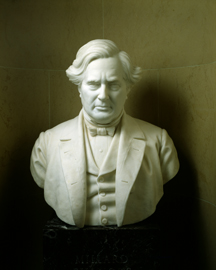
Millard Fillmore of Buffalo presided over the Senate as the 12th vice president of the United States. Fillmore became president of the United States on July 9, 1850, upon the death of President Zachary Taylor.
1849

Daniel Dickinson of Binghampton became chairman of the Senate Committee on Finance, a position he held until 1850.
1860
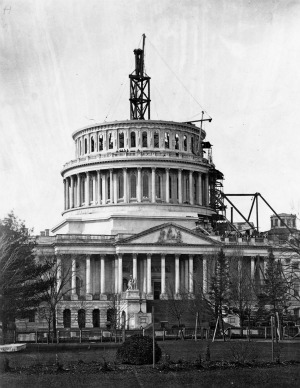
New York foundry James, Fowler, and Kirtland Co. was awarded the contract to build the ironwork of the new Capitol dome. The rate was 7 cents per pound "complete and put up."
1863
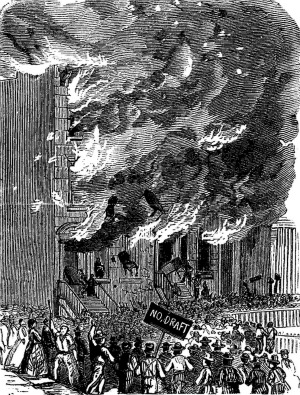
The Senate sent S. 511, "a bill for the enrolling and calling out of the national forces," to President Abraham Lincoln for his signature. The bill, which instituted the first draft in United States history, helped ignite the New York draft riots of July 1863.
1867

Roscoe Conkling of Albany became one of the founding members of the Committee on Appropriations.
1867
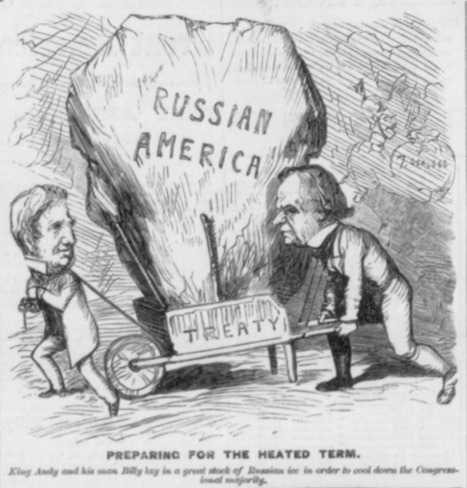
After extensive campaigning by Secretary of State William Seward, the Senate approved the purchase of Alaska by a vote of 37 to 2. The United States paid Russia $7.2 million for the territory, or roughly 2 cents an acre. Seward's critics called the deal "Seward's Folly," but he would be twice vindicated when gold and then fossil fuel reserves were discovered in the Klondike.
1868

William Evarts of New York City, a future senator from New York (1885?1891), served as chief counsel to President Andrew Johnson during his impeachment trial and secured the president's acquittal as the Senate failed to achieve the two-thirds majority required for a conviction by just a single vote (35?19).
1873

A bronze statue of George Clinton, by artist Henry Kirke Brown, was unveiled at the U.S. Capitol, becoming New York's first contribution to the National Statuary Hall Collection.
1875
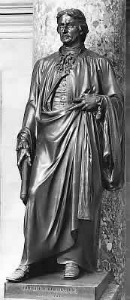
A bronze statue of Robert R. Livingston, by artist Erastus Dow Palmer, was unveiled at the U.S. Capitol, becoming New York's second contribution to the National Statuary Hall Collection.
1875
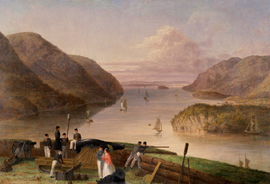
Artist Seth Eastman died while completing West Point, New York, the last in his series of canvases depicting army forts. Today it hangs on the first floor of the Capitol in the medical corridor of the Senate.
1875
Roscoe Conkling became chairman of the Senate Committee on Commerce (today's Committee on Commerce, Science, and Transportation), a position he held until 1879 and again in 1881.
1877
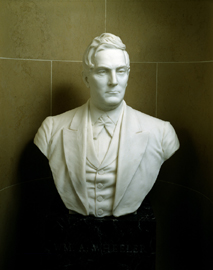
William Wheeler of Malone, Franklin County, presided over the Senate as the 19th vice president of the United States.
1881
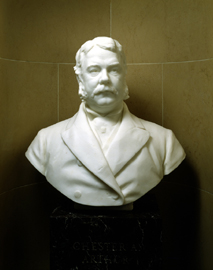
Chester A. Arthur of Perry presided over the Senate as the 20th vice president of the United States. When President James Garfield was assassinated in September of that year, Arthur succeeded him as the 21st president of the United States.
1881

Senators Thomas C. Platt of Owego and Roscoe Conkling resigned their Senate seats in protest of President James Garfield's selection for a New York City customs collector. Both men expected to be speedily reelected by the state legislature but their plan backfired when the state legislature elected two new senators. While this ended Conkling's political career, Platt later returned to the Senate.
1883

Warner Miller of Hannibal became chairman of the Senate Committee on Agriculture (today's Committee on Agriculture, Forestry, and Nutrition), a position he held until 1887.
1889
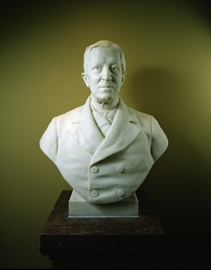
Levi P. Morton of New York City presided over the Senate as the 22nd vice president of the United States.
1901

Alice Louisa Thompson presented the Joint Committee on the Library with François Régis Gignoux's Niagara, The Table Rock-Winter (ca. 1847) on behalf of the estate of her sister Caroline Carroll. Gignoux's stunning depiction of Niagra Falls remains the only pure landscape in the Senate art collection; it hangs in the east stairwell of the Brumidi Corridors between the first and second floors of the Capitol.
1901
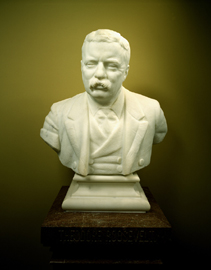
Theodore Roosevelt of New York City briefly presided over the Senate as the 25th vice president of the United States until the assassination of President William McKinley in September 1901 elevated him to the presidency. Roosevelt was elected to a second term in November 1904 and served until March 3, 1909.
1906
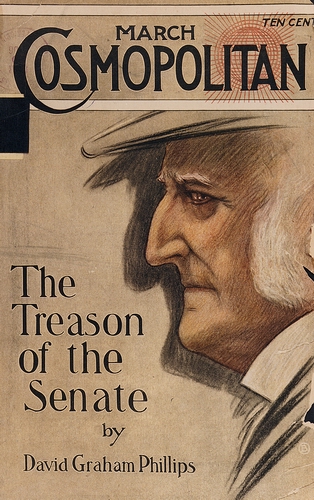
The March issue of William Randolph Hearst's Cosmopolitan magazine contained the first in a series of articles by David Graham Philips collectively entitled, "The Treason of the Senate." The March article, "New York's Misrepresentatives," eviscerated Senators Chauncey Depew of Peekskill and Thomas C. Platt.
1909
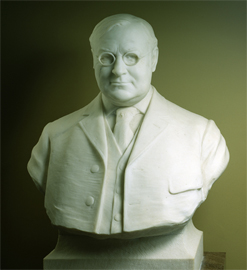
James S. Sherman of Utica presided over the Senate as the 27th vice president of the United States.
1910

Senator Chauncey Depew of Peekskill delivered George Washington's Farewell Address on the floor of the Senate, a tradition dating to 1862.
1912

Senator Elihu Root of Clinton, the president of the Carnegie Endowment for International Peace from 1910 to 1925, was awarded the Nobel Peace Prize. Root served in the Senate from 1909 to 1915.
1914
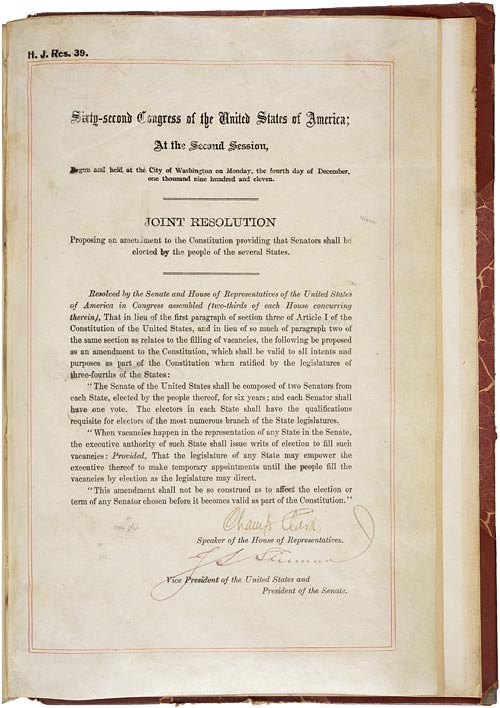
James Wolcott Wadsworth, Jr., of Geneseo became the first directly elected New York senator after the ratification of the Seventeenth Amendment in 1913.
1915
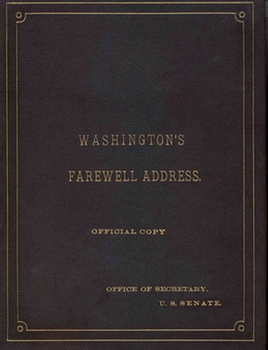
Senator Elihu Root read George Washington's Farewell Adress on the floor of the Senate, a tradition dating to 1862.
1915

Senator James Wadsworth was elected as secretary of the Republican Conference, as well as the first Republican whip, and to date, is the only New Yorker to occupy the whip position. One week later, however, he resigned as whip and maintained his position as secretary.
1919
James Wadsworth became chairman of the Senate Committee on Military Affairs (today's Committee on Armed Services), a position he held until 1927.
1921

Senator James Wadsworth delivered George Washington's Farewell Address on the floor of the Senate, a tradition dating to 1862.
1933

Royal S. Copeland of New York City became chairman of the Senate Committee on Rules (today's Committee on Rules and Administration), a position he held until 1936. He served as chairman of the Committee on Commerce (today's Committee on Commerce, Science, and Transportation) from 1935 to 1939.
1935
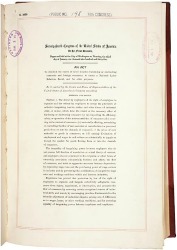
President Franklin Roosevelt signed into law the National Labor Relations Act, also known as the Wagner Act, after Senator Robert Wagner of New York City. Following a period of increased labor strife, the Wagner Act was designed to "diminish the causes of labor disputes burdening or obstructing interstate and foreign commerce." The law also created the National Labor Relations Board to arbitrate labor-management disputes.
1937

Robert Wagner became chairman of the Senate Committee on Banking and Currency (today's Committee on Banking, Housing, and Urban Affairs), a position he held until 1947.
1949

John Foster Dulles of Watertown, who later served as secretary of state under President Eisenhower and as the architect of the U.S. policy of "massive retaliation" during the Cold War, was appointed to fill the Senate seat of Robert Wagner of New York City after Senator Wagner's failing health forced his retirement.
1957

Jacob K. Javits of New York City took his Senate seat. He served four full terms, retiring in 1981. His 24 years of service was an impressive tenure in a state as large and politically tumultuous as New York.
1964

Former senator Herbert H. Lehman of New York City posthumously received the Presidential Medal of Freedom, given by the president of the United States to honor individuals who have made great contributions to either the United States or the world. To date, 28 senators have received the award.
1965

Former U.S. attorney general Robert F. Kennedy of Glen Cove took his Senate seat. Kennedy's older brother, President John F. Kennedy had served in the Senate from 1953 to 1960. Robert Kennedy served simultaneously in the Senate with his younger brother, Edward M. Kennedy (D-MA), from 1965 to 1968. Robert Kennedy ran for president of the United States in 1968 and was assassinated on June 6, 1968, after delivering a campaign speech in California.
1974
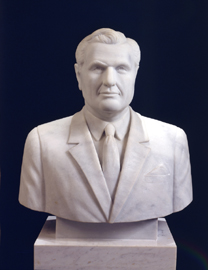
Former governor of New York Nelson A. Rockefeller became the 41st vice president of the United States, and was the 11th vice president from New York, by far the most of any state.
1980
The Senate passed Senate Resolution 550 allowing Jacob K. Javits to serve as chairman of the Senate Committee on Foreign Relations for this single day. Senator Javits, the ranking Republican and a member of the committee since 1969, had lost his reelection bid in November. The resolution was a collegial way for the Senate to honor Javits's service and was endorsed by the committee's Democratic chairman Frank F. Church of Idaho.
1981

Senator Daniel Patrick Moynihan of New York City introduced a "Sense of the Senate" resolution lampooning the soon-to-be-opened Hart building.
1983
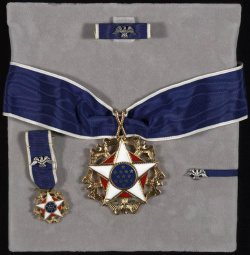
Former senator Jacob K. Javits received the Presidential Medal of Freedom, given by the president of the United States to honor individuals who have made great contributions to either the United States or the world. To date, 28 senators have received the award.
1992
Daniel Patrick Moynihan became chairman of the Senate Committee on the Environment and Public Works, a position he held until 1993, when he became chairman of the Senate Committee on Finance. He served as Finance Committee chair until 1995.
1994

Senator Alfonse D'Amato of Island Park was elected chairman of the National Republican Senatorial Committee, serving until 1997.
1995
Alfonse D'Amato became chairman of the Senate Committee on Banking, Housing, and Urban Affairs, a position he held until 1999.
2000

Senator Daniel Patrick Moynihan delivered George Washington's Farewell Address on the floor of the Senate, a tradition dating to 1862.
2000

Senator Daniel Patrick Moynihan received the Presidential Medal of Freedom, given by the president of the United States to honor individuals who have made great contributions to either the United States or the world. To date, 28 senators have received the award.
2001
After 24 years, Senator Daniel Patrick Moynihan retired, having joined Jacob Javits as the only United States senators from New York to complete four terms in office.
2001

Hillary Rodham Clinton of Chappaqua, former First Lady of the United States, became the first woman senator from New York and the first First Lady elected to public office.
2002
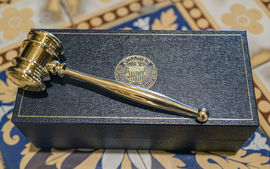
Hillary Rodham Clinton received the Golden Gavel Award for presiding over the Senate for 100 hours in a single session.
2004
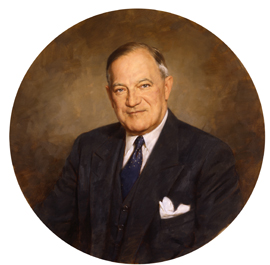
A portrait of Senator Robert Wagner was unveiled in the Senate reception room. His portrait and that of Michigan senator Arthur Vandenberg joined the "famous five" senators originally selected by a committee led by John F. Kennedy in 1957.
2004

Senator Charles Schumer of Brooklyn was elected chairman of the Democratic Senatorial Campaign Committee, serving until 2008. He then was named vice chairman of the Democratic Conference (a new position that fell just below the Democratic assistant leader (or whip) in the leadership rankings) and chairman of the Democratic Policy Committee.
2009
Charles Schumer became chairman of the Senate Committee on Rules and Administration, a position he held until 2015.
2016

Democrats elected Senator Charles Schumer of Brooklyn as their floor leader and Conference chairman. Senator Schumer served as the minority leader from 2017 to 2021, majority leader from January 2021 to January 2025, and minority leader again in January 2025.
2023
Starting his fifth term in the Senate, Senator Charles Schumer became New York's longest-serving senator, surpassing the 24 years served by Daniel Patrick Moynihan.